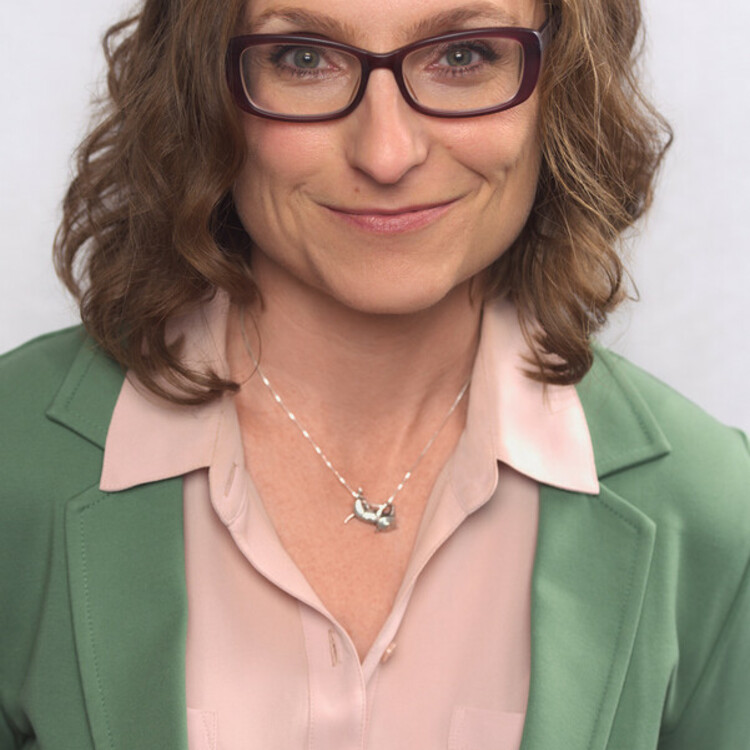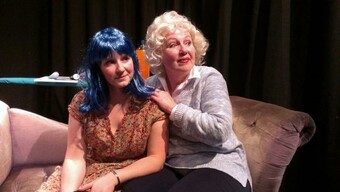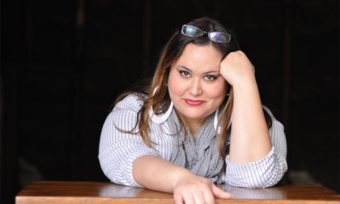Dispatches from LALA Land
California Women Got it On Lock
In just one September weekend, Los Angeles theater patrons had at least three totally different productions of Shakespeare plays from which to choose. The Los Angeles Women's Shakespeare Company's all-female Hamlet was running at The Odyssey Theatre; a three-person adaptation of Richard II opened at The Theatre @ Boston Court; and Will Geer's Theatricum Botanicum presented an outdoor Taming of the Shrew. Each production offered an alternative way of doing Shakespeare: Hamlet was performed in Elizabeth dress on a traditional set; Richard II was a modernist/dream-play take on one of Shakespeare's most psychology-driven plays; and director Ellen Geer turned Christopher Sly and his tricksters into modern urban archetypes who watch/present Taming of the Shrew in Elizabethan dress.
Not only was Los Angeles host to three productions of Shakespeare in one weekend (and there may very well have been more), but all three productions were directed by women—all of whom are the artistic directors of their own companies. According to Douglas Clayton at the LA Stage Alliance, there are about twenty five female artistic directors in the greater-Los Angeles area.
Though I was initially cheered, that number, it turns out, represents only about 8 percent of Los Angeles' artistic directors. The numbers break down further in telling ways. Los Angeles' four LORT theaters are all run by men, whereas half of the city's mid-size companies are either run by women or are collectives that include women as part of their leadership teams, Clayton points out in an email. The number then drops to around 5 percent for ninety nine-seat theater companies.

To find out more about the women running these companies and the challenges they face, I convened a roundtable of seven fairly representative women. Five years ago, Elina de Santos co-founded Rogue Machine Theatre, which presents works that are new to Los Angeles by "up-and-coming playwrights." Lisa Wolpe, the director and star of the all-female Hamlet, has been running The Los Angeles Women's Shakespeare Company for twenty years. Jennifer Chang and Ruth McKee are two of six all-female artistic leaders of Chalk Repertory Theater, a multi-cultural site-specific group in their sixth year. Deborah Devine has been running the youth and family-oriented 24th Street Theater for sixteen years. Nancy Cheryll Davis-Bellamy founded Towne Street Theatre, "Los Angeles' premiere African-American theater," twenty years ago. Jessica Kubzansky, director and adapter of Richard II, has been co-artistic director of The Theatre @ Boston Court since it opened its door ten years ago.
The lively discussion that ensued was as heartening as it was depressing.
The lively discussion that ensued was as heartening as it was depressing. Everyone agreed that eight percent is too small a number, but perspective on how much progress women are currently making in the theater differed widely by generation. While Kubzansky reports discovering more and more women directors all the time, Wolpe has to take a centuries-long perspective to see any real gains. As she put it, "Women would have been killed for being on stage when [Shakespeare's] plays were written, so I mean I can see the progress." Likewise, 24th Street Theater's Devine, who served on the first board of Women in Theatre (a Southern California support group for women in the arts) in 1978, said, "In thirty three years we haven't come far enough." Chang and McKee report that their company has purposefully and successfully provided equal opportunities for men and women at all levels.
These fearless leaders did agree on two things:
1) The reasons they began producing are not the reasons they keep producing. Ruth McKee joined up with Chalk Repertory's other founders because, though she had a national career as a playwright, once she had children she wanted to stay near home. Five years later, she has found that "the influence I have is ultimately making a more profound impact on culture than I could having a play go up in New York for a couple of weeks."
Kubzansky was so addicted to directing that she never wanted to be an artistic director and accepted the job only with the agreement that the theater would find her a co-artistic director to share the more unpleasant tasks like fundraising.
“When I think about the opportunity I have to potentially make a difference in the artistic landscape of Los Angeles, to influence what types of plays are being programmed at my theater, to birth a whole lot of new work by exciting new playwrights—the scope of influence feels so profound that it feels like something I have to keep doing.”
Davis-Bellamy's experience, or as she called it, "creative evolution," mirrored that of some of the other women who have been at it for a while.
“When I first started I didn’t know what I was doing. Then I learned I was producing. Somebody asked me, how do you do this? And I said you just do it,” said Davis-Bellamy.
“The twenty-year mark has been very reflective for us, because a couple of years ago I was ready to forget it, it was too consuming, I had had it. And then we had a recharging of sorts. We got a bunch of new members in and they were younger, they were more producer-oriented. The impact that we have is so profound, particularly for people of color in this city. We fill this large void, because LA theater is majority white. It just is,” she added.
Despite explicit multi-cultural missions, developing multi-cultural casts and audiences is a huge challenge.
Which leads me to my second point: 2) Despite explicit multi-cultural missions, developing multi-cultural casts and audiences is a huge challenge. Davis-Bellamy founded her theater to produce plays by all people of color, but, unable to attract the Latino audiences to the African American plays and vice versa, she narrowed the mission to producing new plays by African Americans and black classics by historically neglected authors. 24th Street Theater's outreach focuses on their immediate neighborhood, which is fairly diverse.
Nevertheless, Devine reports that their audience remains "extremely Balkanized" because "the brown people come to the brown shows and the white people come to the white shows."
Though The Theatre @ Boston Court's casting notices encourage individuals of all ethnicities to audition, Kubzansky noted, "Actors don't believe we really mean it." Chang, an Asian American actor as well as artistic leader of her company, shared her own experience as an actor of color, "I think it’s institutionalized. I went to NYU and UCSD [for acting], and the message I got was, 'You aren’t going to be cast as the protagonist.'" Davis-Bellamy, who is black, chimed in, “At Western Michigan University, I remember auditioning for a Molière play and the professor telling me point blank that he couldn’t cast me as the ingénue because the audience wouldn’t accept it.”
Despite gains in opportunities and representation, women—and particularly women of color—who want to have an impact on American theater have to be producers as well as actors, directors, and playwrights. Davis-Bellamy put it this way: "If you really, really want to have something, you have to create it and you have to control it."







Comments
The article is just the start of the conversation—we want to know what you think about this subject, too! HowlRound is a space for knowledge-sharing, and we welcome spirited, thoughtful, and on-topic dialogue. Find our full comments policy here